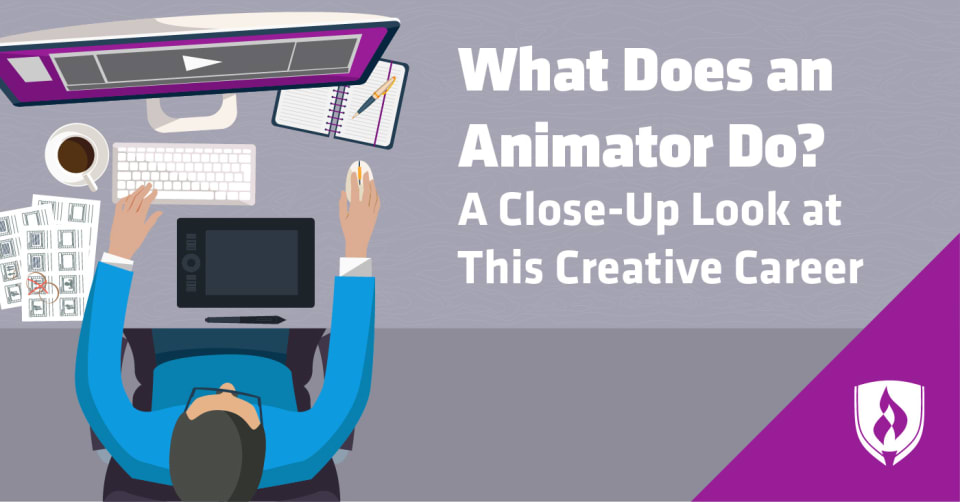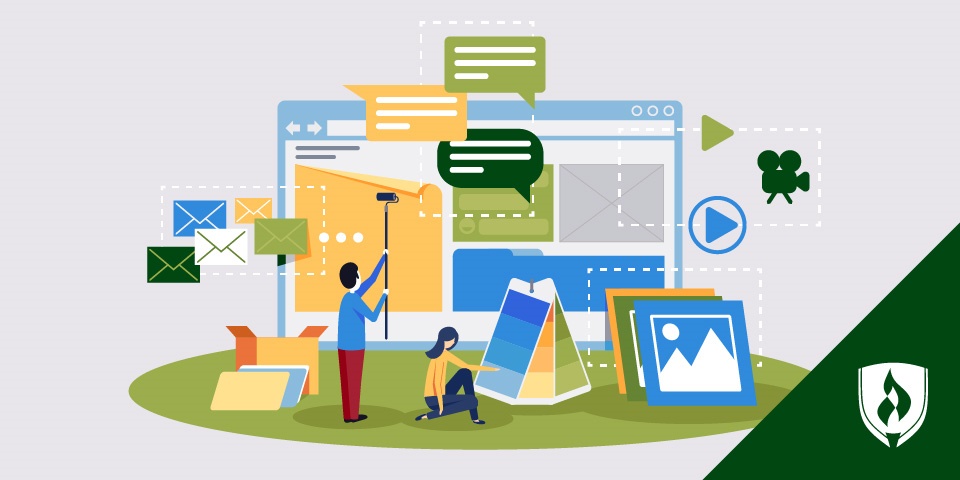
You’re longing for a career that lets you express your creative side without leaving you in the lurch as a stereotypical “starving artist.” Working in animation design could be the answer you’ve been looking for! Forget about the myth of the head-in-the-clouds artist who never has enough work.
You like the sound of a stable career, but what does an animator do all day? These professionals work at the intersection of creativity and technology, using digital tools to bring designs to life for commercials, movies, cartoons, online media and more.
We’re diving into the world of animation to answer all your questions about this design career. Read on to find out what it’s really like to turn your passion for art into a career as an animator.
What does an animator do?
Animators create special effects and other animations for everything from advertisements to video games. Some animators choose to develop a specialty, such as hand-drawing, designing 3D characters or creating computer-generated images (CGI).
Animators use many techniques and tools to accomplish these special effects, such as digital drawings, 3D models and various animation programs. “Depending on the animation, I start by recording myself doing the movements I plan to add to the artwork, and then I do quick, simple sketches to lay out the actions of the pieces,” says Nacho Pesquera, animation designer at personalized storybook publisher Mumablue. “Then I am ready to focus on producing the animation.”
Animators can also be involved in the big-picture development of their projects. In a video game or movie, this could include storyboarding to create a plot and develop characters. For an advertising campaign, it might mean acting as a project manager to keep everything on schedule and within budget.
Where do animators work?
Because animation design is such a specialized career, these creative professionals are able to use their skills in a variety of industries. We analyzed more than 7,000 animator job postings to find the top industries who are looking to work with these design pros:
Top industries for animator jobs2
- Radio and television broadcasting
- Employment services
- Software publishers
- Technical consulting services
- Motion picture and video industries
This variety of work environments aligns with Pesquera’s experience. “In the past, I have worked in TV series, advertising and video games, and I was also a teacher in a local college. I have also worked in visual development and character design for the film industry.”
The Bureau of Labor Statistics also reports that the largest share of animators, 59 percent, are self-employed.1 These animation designers may work with clients across a variety of industries to bring special effects to their projects.
Who do animators work with?
Though animators may do much of the design work on their own, it takes a team to create successful animations. Collaborating with others is a big part of Pesquera’s job, so much so that it’s one of the first things he does each morning. “I read the briefing my teammates from marketing and production send me,” he says. His work in the art department is a blend of advertising and product creation that’s a collaborative effort with others, especially those in the marketing department.
This focus on teamwork is common in the animation industry. Self-employed animators must regularly check in with their clients to make sure everyone is on the same page about the project’s progress. Those working for an organization will often work closely with project managers, marketers and other animators who have different specialty areas. Each of these roles plays a key part in bringing animations to life.
What skills do animators need?
Animation and technology go hand in hand, so you’re probably not too surprised to hear that technical skills are required to be a success in this career. But it takes more than just tech know-how to make it in this design field!
In addition to knowing the technical side, Pesquera advises that having a strong creative process and closely studying the details of the world around you are two skills that will serve you well in animation design.
Our analysis of animator job postings revealed the most in-demand technical and transferable skills that employers are looking for:
Technical skills2
- Adobe Creative Suite
- Graphic design
- Motion graphics
- Interaction design
- Maya
- UX wireframes
- Prototyping
- User interface (UI) design
- Cinema 4D
- 3D modeling
Transferable skills2
- Creativity
- Collaboration
- Communication
- Editing
- Research
- Organization
- Problem-solving
- Attention to detail
- Writing
- Meeting deadlines
How do you become an animation designer?
Don’t worry if some of those technical skills above sound intimidating! A high-quality education can teach you the skills you need to make it in animation design. The Bureau of Labor Statistics (BLS) reports that most employers are looking for candidates with a bachelor’s degree in animation or a related design field.1
Having a solid portfolio to showcase your skills is also important in this visual field. Most degree programs will offer plenty of opportunities to sharpen your skills and build up a body of work to show potential employers.
Is an animation career calling your name?
Now that you have the answer to the question “What does an animator do?” you might be picturing yourself as the animator working behind the screen to bring beautiful effects to life. Learn more about what you’ll need to make this dream a reality with our article “The In-Demand Animation Skills You Need to Make Design Come to Life.”
1Bureau of Labor Statistics, U.S. Department of Labor, Occupational Outlook Handbook, [information accessed February 2019] www.bls.gov/ooh/. Employment conditions in your area may vary.
2Burning-Glass.com (analysis of 7,714 animator job postings, Feb. 01, 2018 – Jan. 31, 2019).




